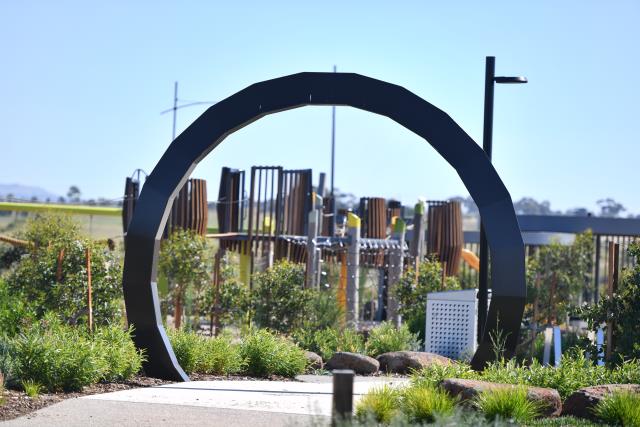Sarah Oliver
Fifteen young endangered Growling Grass Frogs have been discovered at the $1.3 million wetlands at the Aintree estate in Rockbank, prompting a purpose-built wetland to be constructed under the state government’s nature conservation program for urban growth areas.
The wetland habitat will be the first constructed for the frogs under the Melbourne Strategic Assessment Program.
The program has been designed to demonstrate that high quality habitat can be created to provide sanctuary next door to newer suburbs in the state.
The Growling Grass Frog was declared endangered in Victoria in 2002. It was once widespread and common, but populations have declined since the 1990s, mainly due to habitat loss and a deadly fungal disease.
‘Growlers’ need still or slow-moving pools with warm places to bask and dense mats of submerged vegetation to protect tadpoles.
The new purpose-built habitat wetlands, designed to encourage breeding and reduce the impact of disease, will help the frogs thrive.
Design standards also cover adjacent habitat such as grassed areas, which are important for the frogs to forage, shelter and move between wetlands.
In a statement, the Victorian government said another 80 habitat wetlands will be protected or created in Growling Grass Frog conservation areas as Melbourne’s four growth areas are developed over the next 20 years.
Energy, Environment and Climate Change Minister Lily D’Ambrosio said: “This is a project that not only helps to save the endangered Growling Grass Frog, but also encourages Victorians to connect with nature in their own neighbourhood”.
Woodlea Project Director Matthew Dean said the project “is something the community can be proud of, as we do our part in protecting this endangered species.”
The program is funded through developer levies and is being delivered in collaboration with Melbourne Water, Traditional Owner groups, local councils across Melbourne, landowners and the Urban Development Institute of Australia.







